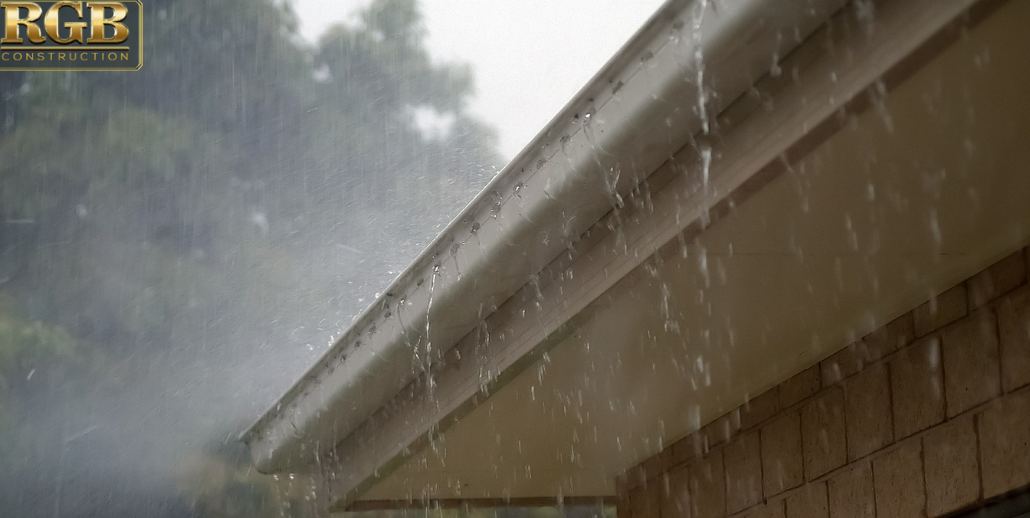Bad weather can play havoc with a roof and replacing one during inclement weather is another story. Rough weather could delay your roof replacement and there are ways to divert a roofing project so you can plan for replacement at the right time.
In order to assure that inclement weather doesn’t rain on your parade or roof, here are some guidelines to follow when and if you install a roof in foul weather.
Roofing Policies
As a homeowner, be aware of the policies a roofing contractor has with replacing a roof during poor weather. Most contractors regularly face weather problems with roof replacements. If it’s continually raining and flooding, or blowing, hailing, or even snowing, roofers have to prepare for what can happen. These conditions create various problems, from delays to expensive repairs to disgruntled customers.
Weather Monitoring
An experienced roofing company will monitor the weather until the installation. The company will strive to schedule a roof replacement on days when the weather is going to be good, but that’s not always possible as the weather is many times unpredictable.
Preparation and Precautions
Maybe a roofing contractor will install your roof in a day but most installations take a few days. Professional roofers will usually remove a few sections of a roof at a time so they can finish those portions in a day.
In case of poor weather, a roofing contractor will provide heavy-duty tarps that will cover any areas of the roof that will affect the interior of a home and protect it from moisture damage. There are also synthetic underlayment materials that are waterproof and are used to re-roof in certain areas of a roof. This is of tremendous help if rain clouds move in.
With inclement weather that starts and stops, roofers will work on smaller areas of a roof. They’ll remove and replace each area a little at a time. The roof and your home will not be open to weather damage.
Weather Delays
If there are delays with roof installation because of inclement weather, homeowners will have to be understanding and patient. The delays are annoying but not the contractor’s fault. Any professional is unlikely to install a new roof in dangerously wet weather as roofing materials used must be totally dry in order to seal properly.
Wet weather that occurs during an installation compromises the structural reliability of the roof itself and the interior of a home, not to mention the roofing crew doing the work.
When roof decking is subject to wet weather, the deck itself can grow mold and mildew. This causes the wood of the deck to lose its shape and rot, which gives rise to roof failure. Raindrops create moisture accumulation that comes as dew, condensation, and extreme humidity, which affects the materials of a roof. The materials can wrinkle and swell and leave you with a deformed roof. Also, the shingles might not attach themselves evenly or in the right way particularly if any underlying materials are damp or slippery.
Your Contract
Be on the lookout in your roofing contract whether there is a clause for protection against inclement weather. You want to know what happens if poor weather affects your roof and home’s interior and who handles it. You also want to know if the weather, such as rain, damages the new roof or other parts of your home at the time of installation.
You want to know what the outcome will be if a roofer is injured during inclement weather. You’ll want to know whether they cover the injury through the roofing company’s insurance. If there is no insurance plan, you may be liable for a worker’s injuries. When a company has no insurance coverage for its workers, it’s a good idea to find a better company to do the installation.
Defective Installation
Wet installations can cause defects in the installation itself which lead to the failure of your roof. Roofing installers take the blame for these defects and may be liable for an improperly installed roof. Roofers are aware of what can happen and that workmanship is in question, plus they cannot guarantee their work in wet conditions.
Customer Needs
There are homeowners who need a new roof or have damage that requires immediate attention when the weather is rainy or cold. It becomes imperative that the roof replacement takes place during poor weather. Problems with leaks that lead to the formation of snow and ice are the main issues. When that happens, there is no waiting for replacement as severe damage could occur. Unfortunately, replacing a roof during the colder months is critical for some homeowners.
Find the Right Contractor
The first thing you want to do is find an expert contractor who offers the best prices and can do the work. Most contractors are less busy during the winter months because most homeowners plan for roof replacements during the spring, summer, and fall. A majority of roofers receive less work during the winter months which means your work will get done faster, plus a lower price may be part of the deal for homeowners. With less demand, even the best of contractors can schedule a homeowner for a roof replacement and install one for a lower price.
Warranties
Working on a roof during inclement weather can cause issues with your warranty. You’ll want to check what your warranty covers. Usually, coverage includes actual materials, not what they have installed. If a roofer attempts to work on your roof during inclement weather and materials are in jeopardy, you are likely responsible for replacing those materials unless your warranty stipulates otherwise. When there is no coverage of materials under your warranty, talk to your roofer about the concerns with replacement costs.
If you need to know more about replacing your roof in inclement weather, Contact RGB Construction at 856-264-9093 for a consultation. We are experts and possess the varied skills necessary in many areas of construction. We know all about inclement weather and how to replace your roof safely and effectively.










